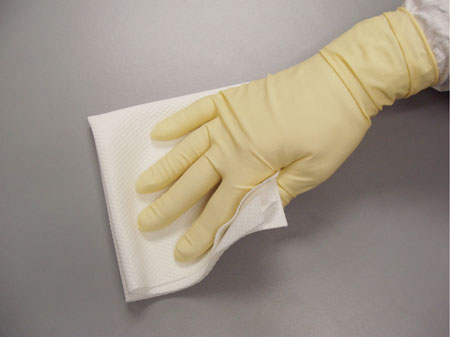Cleanroom Wipes: Everything You Need to Know
Cleanroom wipes are an essential tool in maintaining the cleanliness and sterility of various environments, including pharmaceutical, electronic, and medical industries. In this article, we will delve into the various types of cleanroom wipes available, their features, and how to choose the right one for your application.
1. What are cleanroom wipes?
Cleanroom wipes are specialized cleaning tools designed for use in environments where cleanliness and sterility are critical. They are used to clean surfaces, equipment, and products in cleanrooms, controlled environments, and other critical areas.
Cleanroom wipes are available in various materials, including polyester, polypropylene, and cellulose. They are also available in various sizes, shapes, and configurations, depending on the intended application.
2. Types of cleanroom wipes
There are several types of cleanroom wipes available in the market. Here are some of the most common types:
Polyester cleanroom wipes
Polyester cleanroom wipers are made of 100% continuous filament polyester fibers.
They are strong, durable, and low-linting, making them suitable for critical applications.
Polyester cleanroom wipes are available in various sizes, from small 4x4 inches wipers to large 18x18 inches wipers.
Polypropylene cleanroom wipes
Polypropylene cleanroom wipes are made of 100% melt-blown polypropylene fibers.
They are soft, absorbent, and low-linting, making them suitable for wiping delicate surfaces.
Polypropylene cleanroom wipers are available in various sizes, shapes, and configurations, including pre-wetted wipes.
Cellulose cleanroom wipes
Cellulose cleanroom wipes are made of 100% wood pulp fibers.
They are soft, absorbent, and low-linting, making them suitable for wiping delicate surfaces.
Cellulose cleanroom wipers are available in various sizes and configurations, including pre-wetted wipes.
Nonwoven cleanroom wipes
Nonwoven cleanroom wipes are made of various materials, including polyester, polypropylene, and cellulose.
They are strong, absorbent, and low-linting, making them suitable for critical applications.
Nonwoven wipes are available in various sizes, shapes, and configurations, including pre-wetted wipes.
3. What are factors to choose the suitable wipers for cleanroom?
There are several important factors to consider.
The cleanroom classification requirements should be at the top of the list, including the class of cleanroom, required particle count, and required level of absorbency.
The type of contamination that needs to be removed, such as solvent-based, oil-based, or water-based, is also crucial to determine the appropriate wipe material.
It's important to ensure that the chosen wipe is compatible with the cleaning solution being used to avoid any negative chemical reactions.
Material composition, whether synthetic or natural, is another important factor to consider.
Finally, the size and packaging of the wipes should be chosen based on the specific needs of the cleanroom, including sheet size, number of sheets per package, and the type of packaging material used.
By taking all of these factors into consideration, you can select the most appropriate cleanroom wipe for your specific application.
4. How to use cleanroom wipes properly?
To ensure the effectiveness of cleanroom wipes, proper use and maintenance are crucial.
Before using cleanroom wipes, it's important to select the appropriate type of wipe for the specific application and ensure that it is compatible with the cleaning solution being used.
It's also important to follow the manufacturer's instructions for use, including proper handling, storage, and disposal of the wipes.
Regular inspections and maintenance should be performed to ensure that the wipes are not contaminated or damaged.
Additionally, it's important to properly train personnel on the correct use and handling of cleanroom wipes to minimize the risk of contamination.
By following these guidelines, cleanroom wipes can effectively maintain the cleanliness of a controlled environment.
5. Benefits of using cleanroom wipers
Using cleanroom wipes offers several benefits for various industries and applications.
Hygienic environment
Cleanroom wipers provide a more controlled and hygienic environment, minimizing the risk of contamination and reducing the likelihood of product recalls.
Versatility
Cleanroom wipes are also versatile, as they come in different materials, sizes, and packaging options to suit specific cleanroom requirements.
Cleaning efficiency
Wipes can also help improve efficiency, as they allow for faster cleaning and reduce the need for frequent equipment replacement.
Sustainability
Using cleanroom wipers can promote sustainability by reducing the use of disposable items and minimizing waste.
Incorporating cleanroom wipes into a cleanroom protocol can result in a safer, more efficient, and more cost-effective operation.
Conclusion:
Choosing the right cleanroom wipe is critical to maintaining a clean and controlled environment. By considering factors such as material, size, and level of cleanliness required, you can select the best wipe for your application.
By investing in high-quality cleanroom wipes and using them properly, you can help maintain the integrity of your cleanroom and protect your products and personnel.







